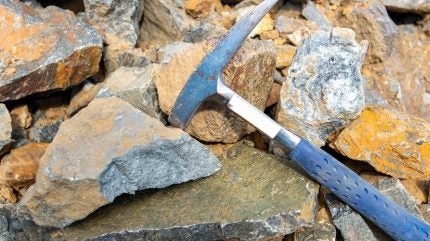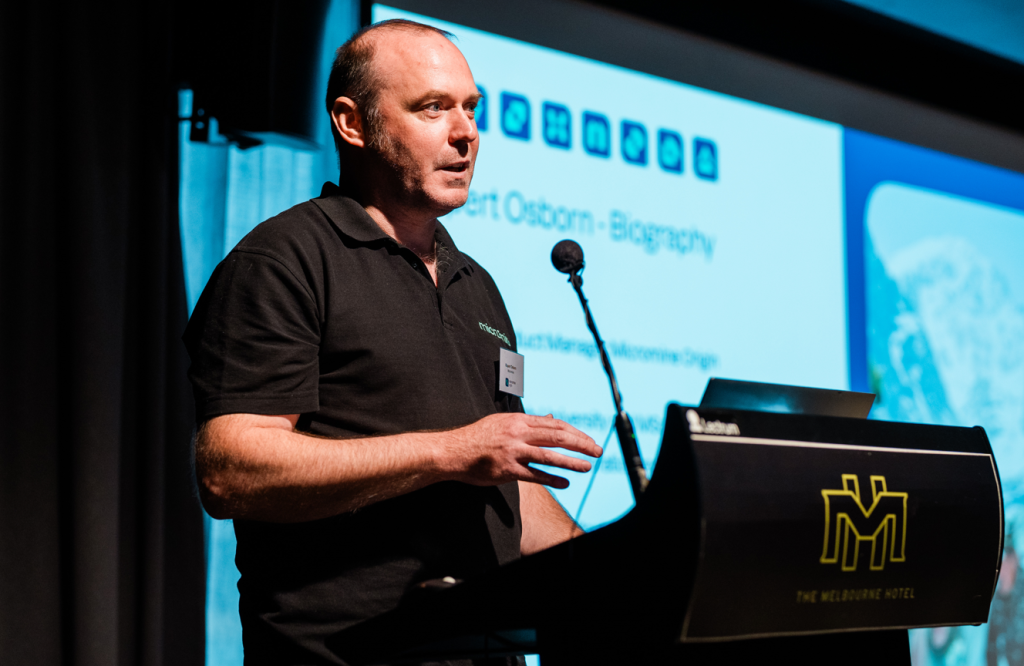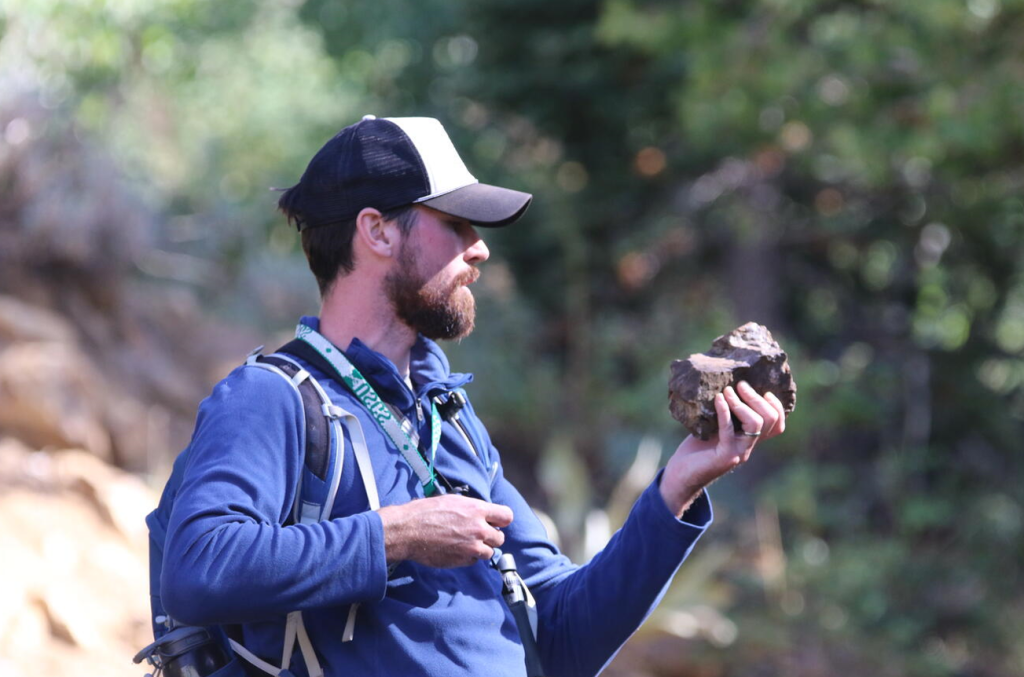
Geology is inextricable from mining production, enabling the identification of new mineral resources, the analysis of deposit quality and quantity, and extraction planning.
However, in recent years a trend has emerged in leading economies across the world – a shortage of professional geologists.
The timing of this decline is a major cause for concern given the concurrent rise in global demand for critical minerals from key industries such as construction, electronics and agriculture.
Mining Technology’s parent company GlobalData highlights the direct interdependence between the net-zero targets of more than 70 countries and the strained supplies of critical minerals required to produce energy transition technologies.
Geology has a crucial role to play in meeting this demand for critical mineral supply, but with geologists themselves increasingly becoming a scarce resource, mining companies have been forced to reconfigure their reliance on the field.
A developing solution to this existential challenge is AI technology. Investments in AI solutions can optimise traditional geological methods with trained machine learning models and efficient data analysis.
However, the technology is not without its risks and international mining industries remain steadfast in calling for cooperation between the public and private sectors to address mining and geology skills gaps.
Tracking the geoscience workforce deficit
The lack of qualified geologists isn’t limited to one country, but worrying statistics are emerging from key markets such as the US.
According to employment projections from the American Geosciences Institute (AGI) and the US Bureau of Labor Statistics, approximately 27% of the workforce in the sector will retire by 2029. Additionally, the country is forecast to face a shortage of 130,000 geologists by the end of the decade.
Across the pond, the UK Mining Education Forum (UKMEF) has reported that enrolment on undergraduate courses has dropped year-on-year since 2019, failing to meet the nation’s need for more than 60 new geology, mining engineering and minerals processing graduates every year.
In Australia, the discovery of new mineral sources and stewardship of existing ones remains the principal source of demand for geoscience capabilities. Research from the Australian Institute of Geoscientists (AIG) suggests that the profession has a “major problem that requires a concerted effort to attract more talented students to geoscience studies and careers”.
The consequences of this shortage are dire for sectors critical to the energy transition, including wind, solar and battery.
If countries cannot produce domestic minerals at a sustainable level, this will necessitate a reliance on imports, heightening risks of mining supply chain disruptions and a lack of transparency in environmental and labour standards.
While there appears to be no isolated factor behind the deficit, the global mining industry is taking a problem-solving approach. According to the UKMEF, the solution requires the cooperation of industry, government, regulatory authorities, institutions and academia.
Rupert Osborn, a technical product manager at mining software solutions provider Micromine, has first-hand experience of the difficulties in the geology job market.
“Geologists don’t historically have great job security. I spent most of my career waiting for the next crash in metal prices when I would be made redundant. Additionally, the largely unjustifiable bad image of mining puts a lot of young people off.”

A report by the Institute of Materials, Minerals & Mining (IOM3) also addresses negative perceptions of the mining industry as “dirty, dangerous and damaging”, stating that modernisation is key to attracting talent and sustaining the industry.
Glimmers of hope are appearing for the gradual renewal of the international geology workforce. In the UK, the University of Exeter recently announced the relaunch of its undergraduate Mining Engineering degree programme following a five-year hiatus.
In Australia, AIG CEO Jaime Livesey tells Mining Technology: “We are seeing universities such as University of Queensland and Melbourne move away from using the term geology for degrees and using Earth Sciences to reflect a broader focus and avoid the negative associations of geology with mining.”
However, the time frame required to train budding geologists won’t meet the pressing demand for critical minerals. The Ukrainian Association of Geologists states that the effect on mineral discovery levels will become a bottleneck in the global raw materials supply chain as early as 2035. This timeline is validated by research from the Geological Survey of Finland.
Graham Lederer, a geologist at the US Geological Survey, points out that even once geology graduates enter the job market, “mining companies, governments and start-ups are all competing over the same people”.
Concluding its workforce projection report, the AGI states that it “expects there will be a continued increase in the use of innovative technologies such as AI to fill the expected talent gap by increasing workplace efficiencies”.
What geological solutions can AI bring to mining companies?
GlobalData reveals that the AI market will grow at a compound annual growth rate of more than 38% by 2030. As with many industries, the enabling technologies stemming from this advancement have begun to transform operations for mining companies just as the effects of the geologist shortage strike.
Osborn identifies areas in the mining industry where AI is most impacting for geologists as: “Geological and grade modelling, logging and analysing drill-holes with core scanning machines, and possibly identifying new targets.”
The AIG highlights the automation capabilities of AI, which can complete repetitive tasks such as geoscience image cropping, data entry, spatial continuity and exploratory data analysis. “With a shrinking workforce, this can help geologists manage large workloads and allow them to focus on more complex and interpretive tasks where human expertise would benefit.”
Mining companies are racing to invest in such tools to reap the benefits of improving operational efficiency that could compensate for the geologist shortage.
Livesey adds that: “AI can and has been used to develop predictive models for mineral exploration. This has had varying degrees of success to date but will only improve over time.”
US Critical Materials recently entered into a definitive agreement with AI-powered mineral asset generator VerAI Discoveries to enhance its exploration activities at rare earth properties in Montana.
Across the globe, Africa-based Botswana Diamonds has announced its own use of AI to increase efficiency when searching for new diamond deposits and other precious materials.
As well as exploration, AI tools can ensure worker safety for mining companies. “AI enables remote monitoring and management, which is especially valuable in challenging terrains and environmentally sensitive areas where it might be difficult to deploy human geologists,” says Livesey.
Governments are also making major investments in AI-led mining solutions to meet national targets. Lederer tells Mining Technology about his role in the USGS’ Critical Mineral Assessments with AI Support (CriticalMAAS) programme for the US Government.

“We are conducting critical mineral resource assessments for all 50 critical minerals under the Energy Act of 2020. This would be extremely time-consuming if we were to do it by an old-fashioned manual process. By adding AI tools, we are confident that we can gain 100-times more efficiency.”
He asserts that as the technology improves, “If there’s feedback loops built in to some processes, AI’s accuracy can exceed or rival that of what a person can do.”
Combining AI and human geology expertise
As with any developing technology, the use of AI does not come without risks, assuaging concerns that it could cause the extinction of geology jobs as we know them.
Osborn affirms that he cannot see AI significantly reducing the need for geologists. “You will still need good geologists to verify AI predictions, not to mention do all the other non-computer-based work. I don’t think that reducing the number of competent, qualified minds on a project will lead to a better industry. Maybe a super AI development will change this in the future, but I haven’t seen much sign of it yet.”
The reliability of technology is another key issue, as Livesey points out. “Decisions made on unreliable data could result in incorrect decisions being made by geologists and mining companies. AI may struggle with some of the nuances of geology and mineral deposits, leading to oversimplification.”
There is also the prospect that an industry-wide overreliance on AI will reduce the competence and learning rate of future geologists.
Lederer cautions that: “When you are a geologist reading text or referencing a map, you are comprehending a lot more than if you are putting it through an AI model and waiting for an output. Early career folks will have a harder time evaluating whether automated tools are producing quality work or throwaway garbage.”
He advocates for a “peer-review process” between AI and human geologists to produce efficient and consistent work for the mining industry.
“We are a long way away from an AI geologist doing all the work. I don’t think that will happen in my lifetime. People are amazing problem solvers and three-dimensional geological reasoning in deep time is a learnable skill, but it is very difficult to try to explain that in a way a computer can understand.”
Geologists who have experience in working with AI will in turn be more employable. A report by the National Academies of Sciences, Engineering and Medicine on the US minerals workforce cites a survey of industry employers that “seek workers with technical skills such as AI”.
The AIG confirms that: “There is growing demand for geologists skilled in both geology and data science. This reflects the mining industry’s need for professionals who can integrate AI with geological expertise and will likely lead to more interdisciplinary education. Geologists will need to learn how to properly validate the outputs of AI and provide the necessary contextual understanding.”
As for the critical minerals demand looming over geologists, Lederer is optimistic. “It keeps ramping up, but I believe we can meet the technical challenges with AI technology.”



